Logistics has recently been at the centre of attention of many in the fresh produce sector. Delays, container availability and exploding prices are among the buzzwords. What is the current state of affairs in container logistics and what are the prospects? During FruitLogistica, various experts from the sector shared their market insights and opinions from different perspectives. Or, in the words of moderator Alex von Stempel from Freshwater Logistics, to help both the fresh produce and the logistics industry find a way out of the perfect storm they managed to sail into.
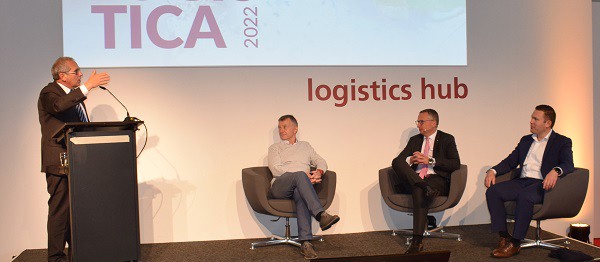
Philip Gray (Drewry), Nils Kahn (MSC) en Bruce Marshall (Maersk) in discussion led by Alex von Stemple (Fresh Water Logistics)
Recovery in 2021
"In 2021, global trade in reefer containers reached 290 million tonnes," says Philp Gray, reefer shipping analyst at Drewry, a maritime research consultancy. The estimated 290 tonnes is an expansion of three per cent and the fresh trade accounts for 49 per cent of total refrigerated shipments.
"The expectation is, these figures are prior to Ukraine, that there will be a reasonable growth of 3.89 per cent (CAGR) in fresh until 2025." By far the largest part of the reefer trade moves by container, 88 per cent, a smaller part by specialised reefer, 11 per cent and the last one per cent is moved in fruit juice tankers. Drewry’s expectations are that, by 2025, over 91 percent of the all seaborne fresh trade will be containerised, as investment in specialised reefers declines.
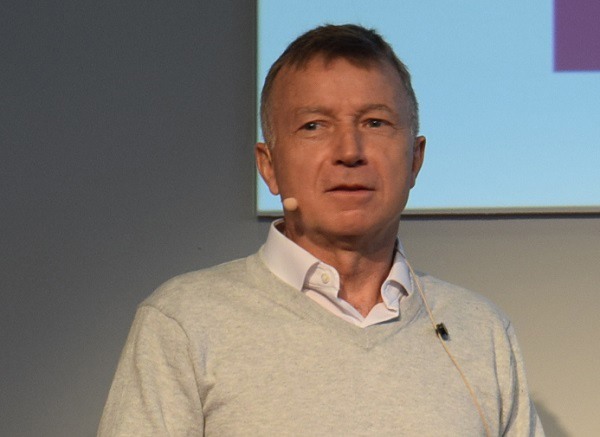
Philip Gray (Drewry)
Enough capacity
Philip concludes that capacity will not be a problem; there are enough ships and plugs. "A lot of new ships are being built, so there is capacity," he says. He also sees that - although probably not in the desired places - there are enough containers. Drewry says the production of reefer equipment increased by 30 percent in 2021.
"A total of 193,000 feu’s (forty-foot equivalent units) were delivered, an absolute record." So if capacity isn’t driving up prices, what is? Philip’s answer is short: dry cargo. Where reefer container freight rates went up, average freight rates (dry and reefer) went up much more. "Reefer cargo must compete with dry cargo for slots. Dry cargo rates continue to challenge reefer rates, which will have to continue to play ‘catch up’ - even as the dry index has fallen recently." Incidentally, rates for specialist reefers are also going up dramatically and Drewry expects this trend to continue through 2022.
Dry cargo
Another factor contributing to the high prices is the global container imbalance. “Repositioning remains a challenge as empties must compete with well-paying dry cargoes and/or non-operating reefers. If you are a shipper in South America or South Africa you have to pay for that backhaul. It has to be inserted in the rate. Otherwise you don’t get your box.” The reefer shipping analyst expects freight rates to continue to rise and questions the viability of low value goods on certain routes. "Keep an eye on dry cargo, that will give you a clue of where the situation is going."
Facing challenges
“We as a shipping line obviously have to deal with all these challenges that we face,” says Nils Kahn, Managing Director at MSC Germany. MSC, a global carrier, is active as in 155 countries with 650 container vessels moving 23,5 million Teu annually. He concludes that these challenges stem from the many disruptions that the global supply chains are facing as a result of the pandemic leading to logistical congestion. He sees the situation being exacerbated by exceptional events such as weather or war. "That heats up the situation further."
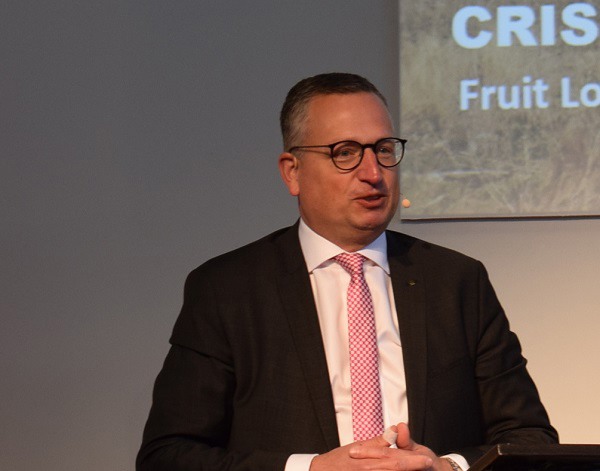
Nils Kahn (MSC)
Moreover, Nils notes that changing consumer behaviour puts additional pressure on transport and supply chains. He illustrates this with the 24 per cent increase in consumption of organic fruit in Germany in 2020, when the pandemic broke out, a lot of which needs to be imported and makes for quite substantial changes. But there are also shifts worldwide. "We see an increasing middle class especially in the Asia Pacific space and focus on higher quality." Nils also mentions the global imbalance in containers that is putting additional pressure on the system. Furthermore the future has a big challenge in store, Nils notes: decarbonisation. MSC is targeting net zero decarbonisation by 2050, for example by using alternative fuel or new technology.
Flexibility and expansion
For MSC the answer to those challenges is flexibility. “We became extremely flexible and continue to do so on our schedules and service rotations because there is no other way around.” This means for instance diverting the service into another port because in the original port of call the terminal is full. “We are doing this on a daily basis and sometimes various times a day. This is not easy for us, but also not easy for our customers or for the freight forwarders.” Another route was found in expansion as well as in the investment in new technologies. “We have grown the fleet substantially the last two years and added globally 12 new liner services.”
Predictability
It is clear that carrier Maersk is facing the same challenges as other carriers. Or in the words of Bruce Marshall, Head of Reefer Solutions at Maersk, which focuses on integrated container logistics and supply chain services, "We feel the same pains in terms of operational execution and future fleet investments." What does the customer need in all this, is the question Maersk is asking. Predictability, Bruce mentions. "In our conversations with customers we hear: ‘I would rather grow a long relationship with you and let you penetrate further into the supply chain, so I know what the outcome is going to be: it becomes predictable and I know what to expect from you."
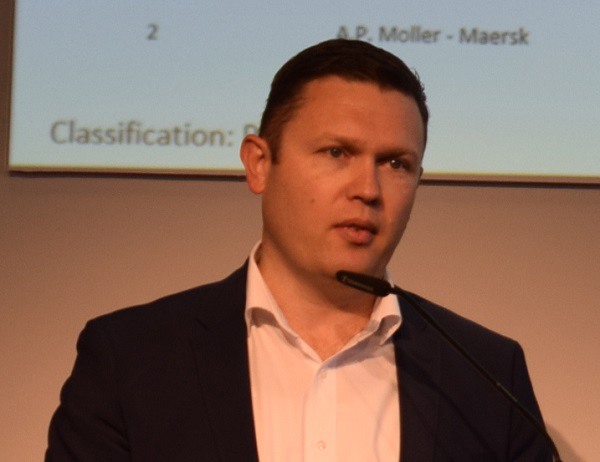
Bruce Marshall (Maersk)
Improving customer outcomes
Maersk notes that the situation is complex and it is about connecting the dots and investing where it makes sense. "We will invest in increasing our reefer fleet and in new technologies where it improves customer outcome. Another one of those ‘dots’ is global reach. "Customers want us to be able to manage their business along different flows as markets change." Innovation, sustainability and quality are other aspects Bruce mentions.
"Making sure that the service we offer the customer delivers the fruit and products in the right condition." For that Maersk moves into the farmers space as well as much as much the industry requires it. Sustainability is also mentioned. "It is an urgent need at the moment. We collectively, as an industry, have a responsibility to do something about it. We aim to be zero carbon by 2040." Maersk is pursuing that by investing in e-methanol and e-ammonia and the shipping technology to manage that.
Puzzle
Bruce concludes that many components need to be used to put the puzzle together. Maersk wants to achieve this by offering consumers different value propositions in which they see the answer to their pain points. "So gain relievers against the pain points they have. That’s what it’s all about for us. If we can do that and link the pieces together, drive efficiencies, there is far more value for everyone in the chain. Not just the logistics provider, the customer gets a better result and the consumer gets a better outcome and a better product."
Disruptions
Although DHL is probably better known for air freight and other forms of logistics, it is also active in the reefer business. "We have been doing this for many years," says Timo Blok, Global Head for Ocean Freight Temperature Controlled Business at DHL Global Forwarding. Timo broaches the subject of congestion and concludes that the situation in Ukraine is increasing the pressure on the on the already exiting congestion. But he also sees that this is just one of many disruptions; the Suez interruption, the recent Covid outbreak in China, to name a few.
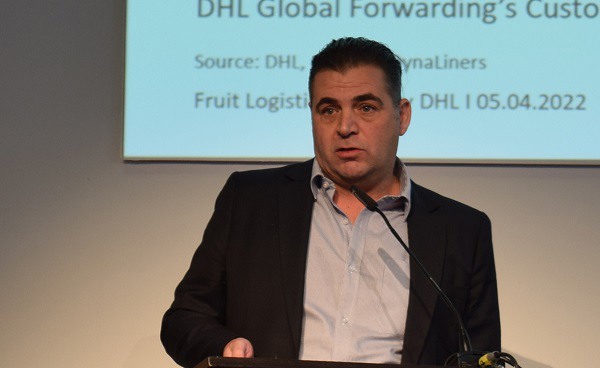
Timo Blok (DHL)
Imbalance
Timo notes that food is hit hard by congestion. "The lowest-growing commodity is temperature-controlled freight, which is 95 percent food. All other commodities have high demand and are willing to pay higher freight costs. From Asia to Europe, a container pays $20,000 for dry cargo, but $12,000 for reefer containers. So it is clear that the carrier prefers dry containers or even reefers as higher yielding dry containers. That increases the imbalance and makes life much more difficult." He calls the situation bizarre. "How can a garlic exporter pay USD 20,000 for a container when the cargo value is only USD 12,000?" He concludes that, although unfortunate, currently only price is playing the game.
Standard
Schedule reliability has dropped from around 70 percent on time last year, to only about 30 percent this year - a record low, mentions Timo. "Customers are still asking for 80 percent, but that’s just not realistic. The times of 70 to 80 percent are over." He attributes that to congestion and a lack of equipment and notes that everyone is trying to improve reliability, but that the many bottlenecks are exacerbating the situation. "It’s a situation that we have to live with and see as standard for at least the next year, possibly even longer, until we catch up a little bit."
More balance by 2023
One of the consequences of all the logistical problems that Timo sees is that food doesn’t get everywhere anymore - especially to less developed countries. "It’s just not feasible to pay one percent of your salary for one orange." He anticipates that the logistical situation will not change in 2022, but is more hopeful for 2023 - though not before Q3. "We hope that by then we will have some balance in the market again. But of course we will never go back to pre-Covid levels with freight rates around USD 1,000-2,000."
Peaks leading to bottlenecks
Anne Saris, Business Manager Agrofood at the Port of Rotterdam, which has an annual throughput of 19 million tons, including fresh produce, highlights the logistical problems from the port’s perspective and stresses the importance of cooperation. "We need to work together to overcome the challenges and get those products to the customer in a reliable way." The Port of Rotterdam aims to find solutions together with the market. She notes that the rapid economic recovery following the impact of Covid, although a positive development, led to peaks and that combined with fixed terminal capacities created bottlenecks.
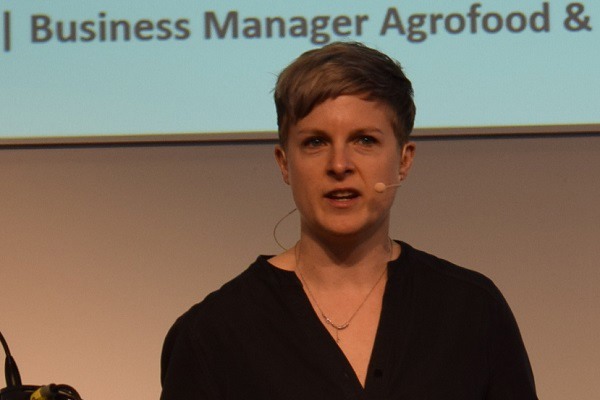
Anne Saris (Port of Rotterdam)
Infrastructure
In order for Rotterdam to remain the reeferport for the future investments in both specialised facilities for reefer equipment but also for reefer containers are needed, Anne notes. Other investments include optimising both the physical and the digital infrastructure, as well as the processes. In terms of infrastructure the Port of Rotterdam is building new quay walls. “We do that already before the terminals evoke their option to expand so that by the time they want to expand their terminals the quay side is ready which speeds up the process.” With investments in the Rotterdam Food Hub – for barges and deep sea vessels up to about 4.000 TEU - the Port of Rotterdam wants to facilitate conventional vessels and the more specialised reefer container vessels up to 2.000 to 3.000 TEU.
Digitisation
On the digital side, the port needs to become more transparent, predictable and reliable, Anne points out. One example is the service Quay connect, based on blockchain technology, that optimizes and digitizes the entire custom clearance processes where it comes to Brexit, leading to a cost reduction. Another example is about the stricter control due to increased concerns about narcotics traffic. The Port of Rotterdam mapped out the bottlenecks and discovered that a large part of those processes involved manual actions that have now been digitized and automated allowing for a shorter leadtime. The steps taken leave Anne optimistic for the future. “It takes a bit of time to overcome those hurdles, but together with the market I am convinced that we will succeed.
All in all, this event showed that steps can be taken to improve the logistical situation, but it may take some time to overcome the challenges.
